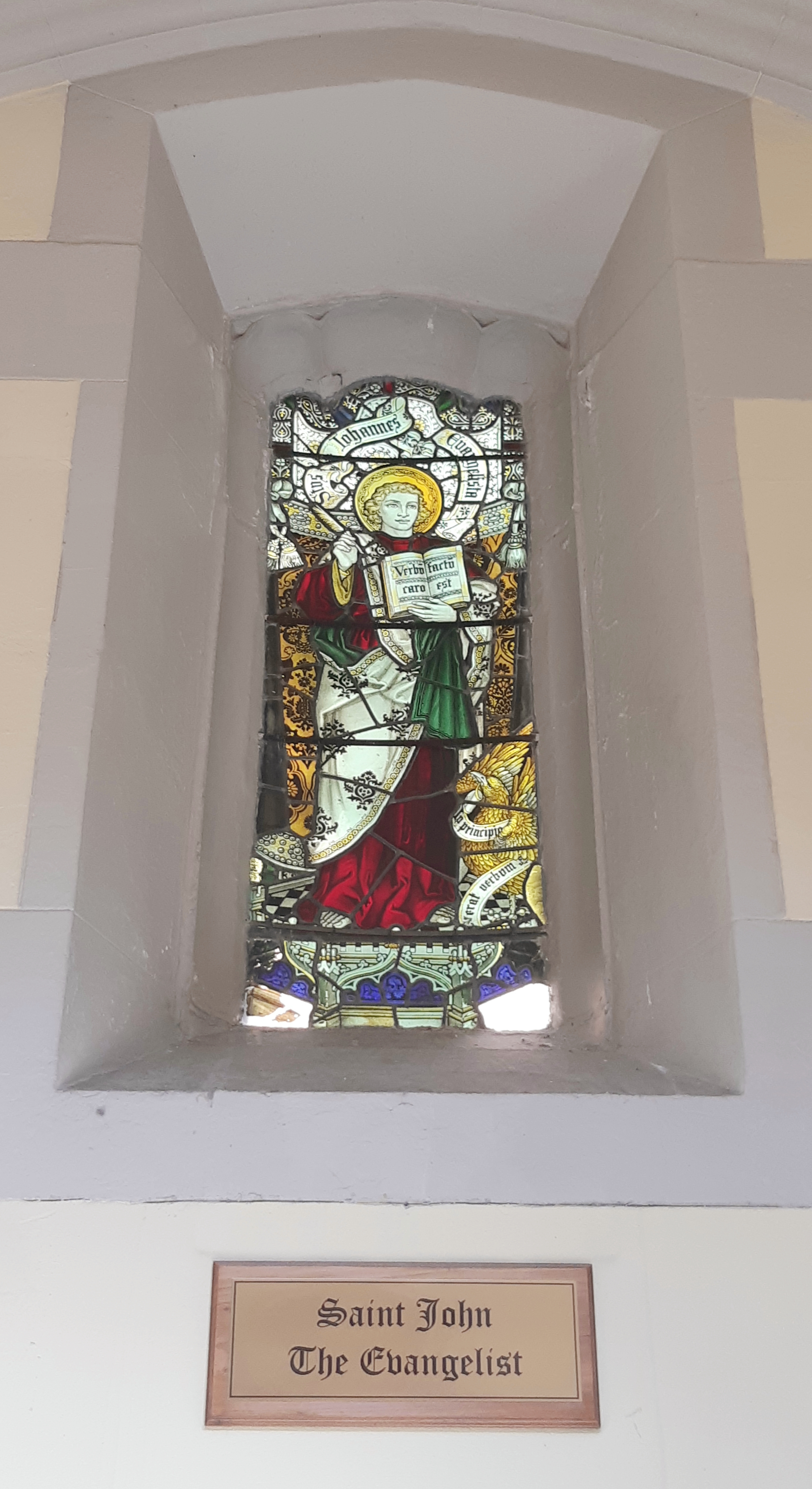Stained Glass
The Great Window
The Diocesan Women’s Cathedral League was responsible for the concept and fundraising for a memorial window to commemorate all Nova Scotians and Prince Edward Islanders who made the supreme sacrifice for their God, their King and their country during the First World War. The Great Window, above the high altar, was unveiled on All Saints’ Day in 1921. It was the work of the English glass-artist, C.E. Kempe. The window and surrounding stonework were so badly damaged in the 1945 Bedford Magazine explosion that the sanctuary was closed for almost a decade while the glass was replaced, and the stonework repaired. The window places Christ at the very centre of all, exalted and reigning in heaven as seen in the vision of St. John in Revelation, the Bible’s closing book. Surrounding Christ are a host of those in praise of Him including prophets, kings and saints. Angels soar above bearing ascriptions of praise from the “Te Deum” and musical instruments. The circle surrounding the central panels is violet in color, representing a rainbow, the symbol of mercy.
The Communion of Saints Window
Instead of being installed as a complex work, this window was filled one panel at a time over many years. In it, you will see the bright images of the founders of the Christian faith. Seven panels, reading left to right, top to bottom:
- Saints Columba, Augustine of Canterbury, Paul and Barnabas.
- Saints Boniface, Gregory, Matthew and Mark.
- Saints Patrick, Ninian, Andrew and Luke.
- Christ crucified, St. John the Evangelist, The Virgin Mary and Christ Child.
- Saints Aidan, Cyprian, John and Matthias
- Saints Athanasius, Ambrose, Peter and Bartholomew.
- Saints Anthony, Basil, James and Simon.
Pentecost Window—Apostolic Succession
The Wambolt family donated this window to the memory of Mr. and Mrs. James Peter Wambolt. It was the work of Alfred Wiklinson, F.I.A.I. of Brightling-sea, Essex, England. Its general theme is Pentecost, and the five central lights depict the scene of “cloven tongues like as of fire” while the Apostles stand in awe. The Holy Spirit, represented by a dove, is up on the vescia. Other panels depict: “The Armour of Righteous; “The Sword of the Spirit;” “The Consecration of Bishop Inglis; “and other scenes related to the work of the Holy Spirit. On 19 June 1960 three more panels were dedicated, which had been donated by the Fry family in memory of family members; by Mrs. John Gordon and her daughter, in memory of John W. Gordon; and by the Lockward sisters in memory of their father and mother. The MacMechan Panel, the extreme left-hand one above the transom, dedicated on 24 July 1960, was donated by the daughters of Mrs. MacMechan and their families.
The Bicentennial Window
The Bicentennial Window, at the Cathedral Church's ecclesiastical West end (geogrphaically at the East end), portrays Jesus preaching from a fishing boat near shore of the Sea of Galilee. One of its unique features is the combination of stained glass and clear glass. Christ is seen pointing to a sower on a distant hillside. The sower becomes the text for one of His most famous parables. As the Sea of Galilee extends to the horizon, natural skylight streams through the clear glass in the upper portions of the window. Standing in the transept or chancel, an outline of a high-rise apartment building can be seen above the horizon. The image created symbolizes the mission of the cathedral to proclaim the gospel to the city, diocese and contemporary world in which it is set. The window was the gift of many members and friends of the cathedral congregation. It was designed and crafted by Burton/Hrabi, a Prince Edward Island firm and was installed by Kidston Glass of Halifax.
The window was the gift of many members and friends of the cathedral congregation, to mark the 200th anniversary of the arrival of first Bishop, Charles Inglis.
Windows in the Nave
Throughout the nave of the Cathedral there are numerous pictures of Saints including windows representing St. Catherine of Alexandria, St. Paul, St. Thomas, St. John the Apostle, and The Blessed Virgin Mary, rescued from St. Luke ‘s Church.

